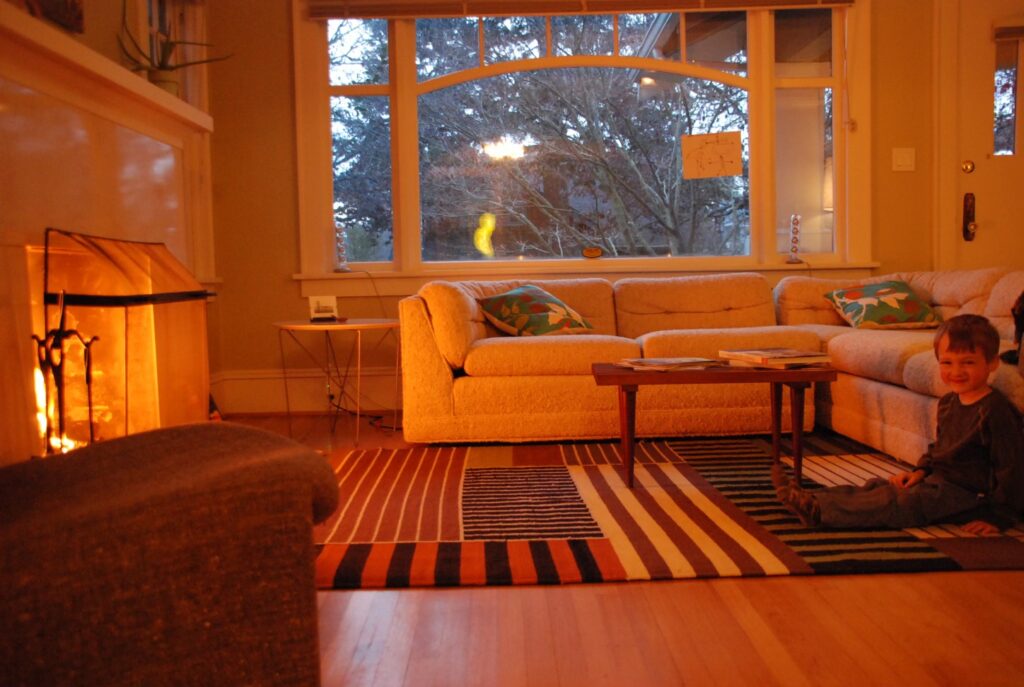I was 10 years old. It was an ordinary day of playing with Legos and proudly reading chapter books, when all of a sudden, my parents did an unthinkable act, a heinous deed so incomprehensibly vile that no 10-year-old could even comprehend such an emotionally scarring blow. They purchased a new couch.
The cushiony replacee was an old couch — a cream-colored woven wool piece of furniture, an L-shaped foundation for dozens of pillow forts and games, with springs that propelled any jumpers high into the air. Its sides were scratched from years of torment from our cat, with just enough space between the bottom and back cushions that a child could snuggle in, enveloped in the scent of cat and wool and lint. A favorite activity of mine was shoving my head as far into the couch as I could, trying to block out all the outside light. With the right squirming, the upholstery would turn into a world of its own. It was a home of play and gathering; of wild and of calm. An infamous game in our household was known as “The Spinny Thing where We Fall Down,” where my dad would lift me up and spin me around until we crashed forward and rolled down the back of the couch, across the whole thing and onto the floor, laughing. In my mind, that couch was my childhood. Upon its removal, I threw a massive tantrum even though the couch was only being moved to the basement to be our TV couch, which, in hindsight, turned out to be even better for making pillow forts in. But 10 year-old me had an impressive incapability to see the bright side in any situation I wasn’t pleased with, and this in combination with my utter phobia of any minor change whatsoever led to a very bad combination indeed. But, as with all things, the dust eventually settled. Until the couch disappeared entirely.
My anger at the abduction of the couch was nonsensical in retrospect, given that it was a threadbare, scratched piece of furniture, but I felt entirely justified in my fury. The new basement couch was a tasteful blue, with cushions in fact even better suited for pillow forts, but it had none of the sentimentality of the old one. And as a young child, I cared very much for sentimental value. I had several jars of rocks and sticks I had collected from places I’d been, even if the place didn’t hold any special value. When I was little, I got a toy car that I liked the look of and deemed “too special to play with.” Years later, I took it off my shelf, realizing I had no special memories of it at all. Another time, my parents got me a new toothbrush. I was excited, until later that day I found my old Darth Vader-themed toothbrush lying in the trash. I was horrified, and hid it on top of the bathroom lights where it sat for years accumulating dust. In 5th grade, in a book group, when discussing loss, the teacher asked us to share a time we experienced loss. I said the time my parents got a new fridge. “It was a good fridge!” I exclaimed mournfully. That moment still reigns supreme as the most cringe-inducing memory of my entire life. This took place a few months after the couch incident when we had our kitchen remodeled. I believe at this point one can expect how I reacted. Not only was the ever-so-cherished refrigerator replaced, but every other kitchen appliance. I was devastated by the changing of the cabinetry, bereaved by the replacement of the oven. I think some small part of me realized that the whole affair was entirely ridiculous, but it was pushed down by the part that was hardwired for sentiment, no matter the object or setting. In fact, this debilitating sentimentality was not limited to physical objects either. From the ages of three to eight, I threw an annual tantrum of not wanting to turn the next age. “I want to stay four forever!” I wailed. I was so afraid that if things changed, all the good things in life would be lost. If one thing changed, everything would.
I can’t quite put my finger on the moment where my thinking changed. Maybe it was gazing at the treasured wooden car and realizing that the attachment resulted in a lack of use, or seeing the new kitchen glinting in the sun, or glancing at the jars of rocks on my shelves and not feeling any joy from them. Or maybe it was none of these things, and instead a gradual shift from black-and-white thinking to shades of gray. A personal choice to live in the moment instead of clinging to the past. To stop clutching to physical fragments of memories and instead let the most important memories stay and the others fade. To appreciate the past but exist in the present.
Now I sit upon the blue couch, in a renovated basement watching shows on our new TV. Now, when there is change, I am not afraid, I am not angry, I am not mournful. I have not shoved down these feelings, but embraced them. Time flows, life swirls, and digging in your feet will only cause you to fall. A fear of change is not just a fear of the unknown– it is the fear of life itself.





Leave a Reply